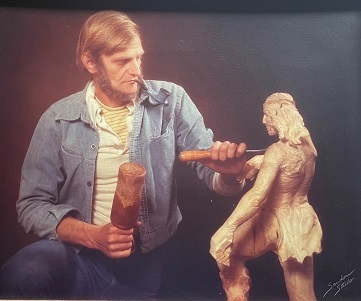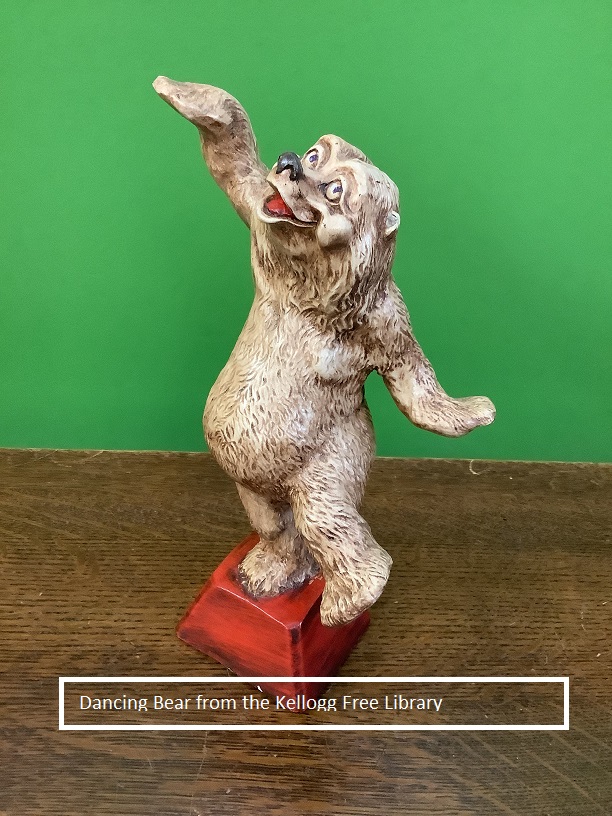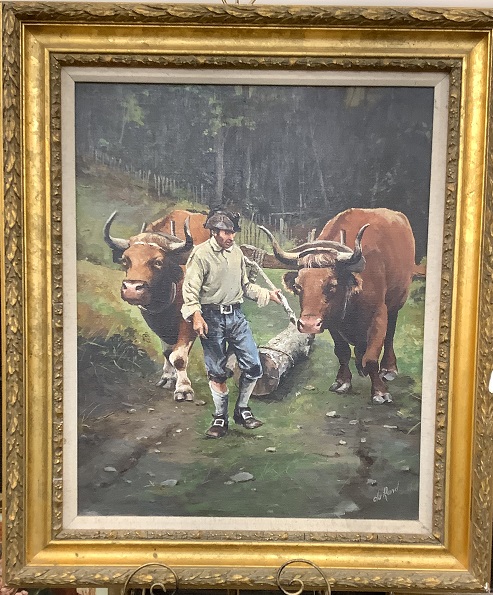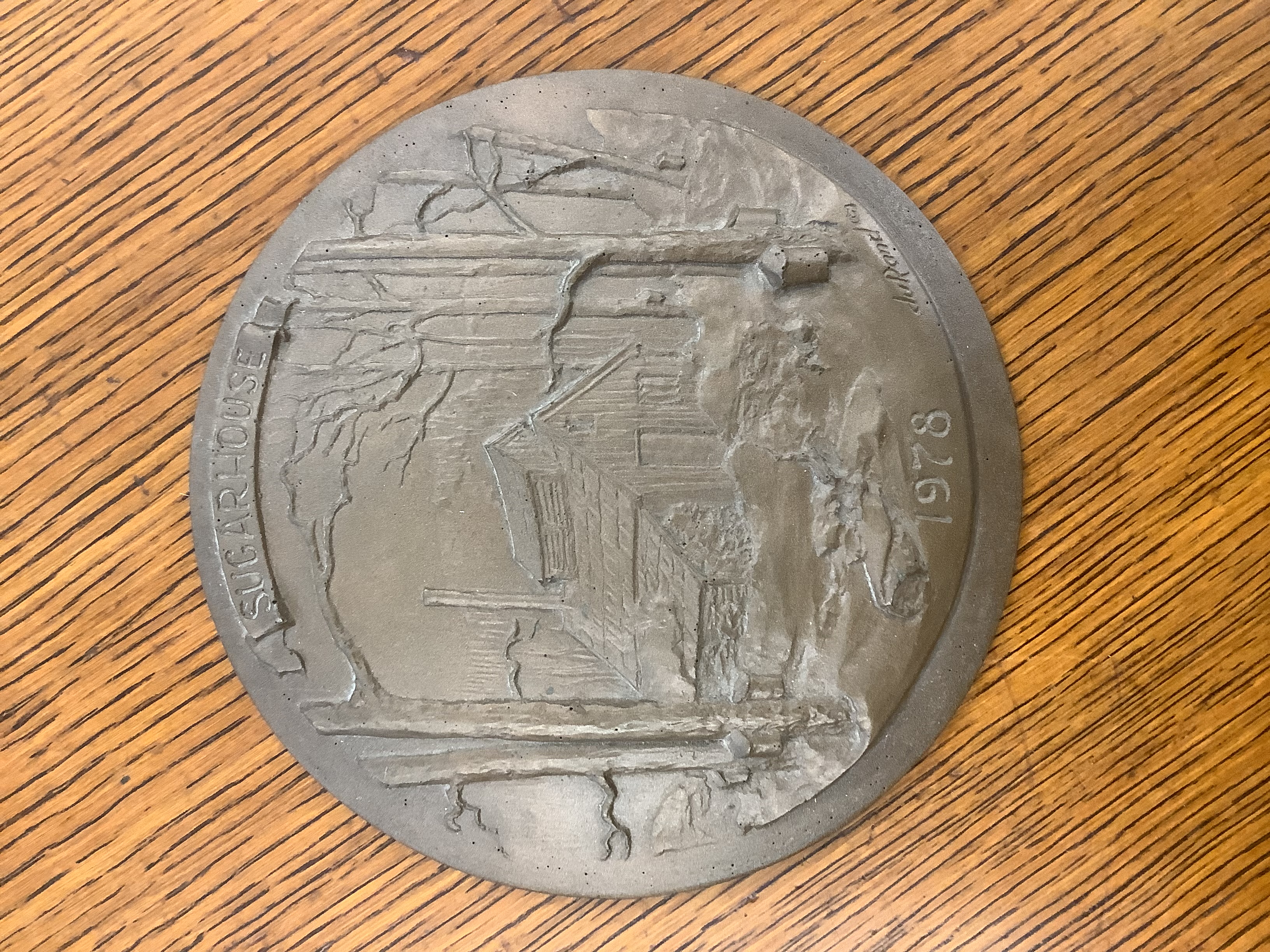
|
|
Home | Membership page | Photos/oral history | contact/links | Museum |

Earl Rumsey Durand, Jr.
(1935-2004)
Born in Westchester County in 1935, Earl Rumsey Durand Jr. “came home” to Central New York in 1972. His family has deep roots in Cortland County going back several generations, the Durand and Rumsey names evident on early maps of Homer. He and his wife, with their four children, built a home on Taylor Valley Road in the Town of Taylor. It didn’t take long for him to be appreciated in his new neighborhood as he created a commemorative medallion for the country’s bicentennial. The work was sold to raise funds for the community celebration and the first of the limited edition was presented to President Gerald Ford at the White House. In a short time he distinguished himself by producing paintings and sculpture, establishing a studio in Cincinnatus.
“Bill”, as he was known shared his talents with his community: locally, statewide and nationally. He was a mentor to young children in a SUNY Cortland teacher education program, bought and renovated the “Brick Store” in Cincinnatus, an 1832 landmark destined for razing, and was instrumental in spurring the salvaging of the historic Congregational church there.
He was the “Artist in Residence” for the New York State Parks Department and for years demonstrated the lost art of wood sculpture at the New York State Fair, also designing and constructing a variety of fanciful concessions there. He restored a derelict building in Cincinnatus to become a gallery and studio, Chateau Durand, where he created his sculptures, drawings and paintings, all found throughout the country and the world. Although he died in 2004, his legacy succeeds him.
Although he admitted starting his wood carving and identifying his passion at age 8 and after attending Cooper Union School of Fine Arts and serving in the military, he began designing prototypes for Avon bottles, original molds for Holland Mold and creating other projects for a commercial display firm. When he established his own display house in Cortland County, his work became much in demand: an eagle sculpture for Pratt & Whitney Aircraft, life-sized statues of Billy Backus and Carmen Basilio for the Canastota Boxing Hall of Fame, medical models for a science museum, a statue of Cardinal Newman for the O’Heron Newman chapel at SUNY Cortland.
In time he produced an extensive collection of paintings, pen and ink drawings, wood carvings (basswood being his favored medium), bronze sculpture, and architectural work. His talents ranged from a carved wood coat of arms for Cornell University to furniture carving for Stickley, restoration of plaster detail at Boldt Castle on Hart Island in the Thousand Islands and pieces in museums near and far.
 |
Earl Durand's paternal great great grandfather is presented in an oval frame. Earl bore a striking resemblance to his grandfather which can be seen by clicking on the small image. |
Selections from the collection
of the
Kellogg Free Library, Cincinnatus, N.Y.
click the picture to enlarge
Here we have a painting of John Forshee (the last tinsmith), The Medalion Earl crafted for the Bicentennial,
the Dancing Bear, the Drummer Boy painting and the statue of The Frontiersman. Examples of the varied artistic media at which Earl excelled.
 |
 |
 |
 |
 |
***************
Examples of the Avon Bottle Collection
Earl was called on to design various shapes to be used as molds for Avon bottles
 |
 |
 |
 |
***************
Some of the "Funonials" that Earl was know for
 |
 |
 |
 |
***************
A few of the Holland Molds he produced
which were used by hobbyists
 |
 |
 |

|
***************
And finally, a grouping of various works demonstrating Earl's
mastery of different media
 |
 |
 |
 |
 |
 |
 |
 |
 |
 |
***************
Jacobus Bush
Tom Cass was speaking to Earl Durand one day and told him the story of Jacobus Bush.
As was common in the old days, neighbors would get together and help anytime that a big project- a house, a barn, etc
had to be done. On one occasion, Jacobus needed help building a road into his property and mentioned it to his neighbors.
They apparently did not think that this warranted their attention and refused. Jacobus wasn't going to ask twice and set about doing it by himself.

********************************
Earl's neighbor, the late Roger Potter, built a Maple sugaring house at his farm. He invited neighbors and friends to celebrate its completion
with a party and dance inside the building. This experience prompted Earl Durand to create a plaque depicting an older version of a sugar house.

*******************************
And finally, we have some links that can be followed to look at places on the internet where information and/or examples
of Earl's work can be found.
a You Tube video here
a listing of his works and a bio here